What causes damp and mould in your home
Damp and mould are caused by a variety of reasons. To fix the problem, you and your landlord need to identify the issue.
What can you see
When damp and condensation mould are in our homes, we usually see a damp, brown stain or condensation and black mould.
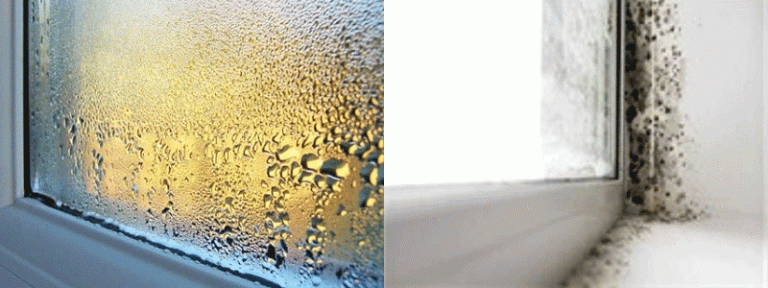
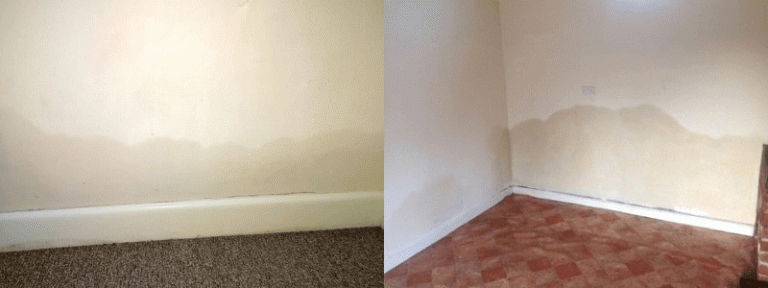
Black mould and condensation
The type of mould that creates a serious health risk is black mould and this is caused by condensation.
Condensation is when air that is damp (filled with moisture), hits cold surfaces in our homes, such as walls or glass. Mould grows on the water from the condensation. A common place for condensation to form is on windows.
Causes of damp air
Moisture naturally builds in our homes from our daily activities such as breathing, sweating, cooking, washing and drying clothes, showering and taking a bath.
An average household can produce up to 21 pints or 12 litres of water a day. One extra person in your household doubles the amount of moisture in the air. Good ventilation and warmth usually work well to prevent condensation and mould forming. To find out how take steps to protect your health and home, read how to deal with condensation, damp and mould in your home.
Brown stains
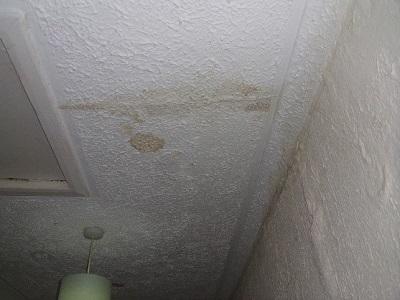
These types of stains are formed when water has been leaking over time. They can either come from outside water getting into your home or leaks from pipes or water sources inside your home.
Penetrating damp
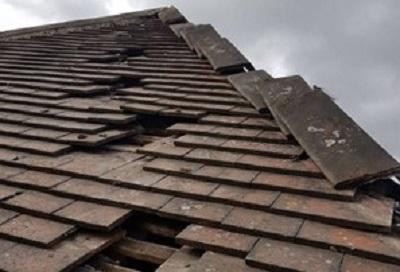
This is water coming into the home from outside due to a damaged roof, chimney, or any wall or building feature above ground. This can be caused by a leak from another building or rainwater not draining properly.
You will often see a clear visible brown stain inside your home.
Water leak damp
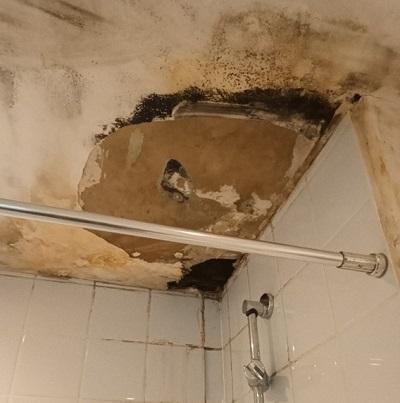
This damp is caused by leaks from inside of the home. If you live in a flat, it may be coming from water leaking from a flat above you.
Damp and brown staining may appear on the ceiling under a bathroom or shower, for example water leaking through old or faulty water pipes, or the bath sealant is ruined. To find out what is causing the leak, sometimes floorboards or bath panels need to be removed.
Rising damp
Rising damp occurs when moisture travels upwards, typically up a wall or through a floor. The water source is below the ground. Because you can get rising damp along a length of a wall it will show in a brown stain or a horizontal "tide mark".
Once you have looked at what type of damp you have and what may be causing it, the next step is reporting the problem to your landlord and property agent.
The health impacts of condensation mould
Condensation mould is made up of types of fungi, which release tiny spores in the air. These are invisible but cause respiratory problems and can affect the immune system. If you leave even a small patch of mould in your home, it can very quickly cover large areas which produce even more of these dangerous spores. See NHS advice on how can damp and mould affect your health?
